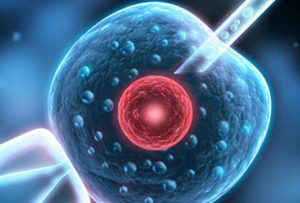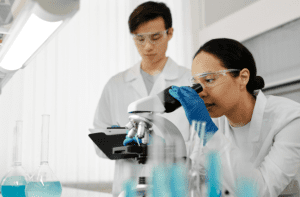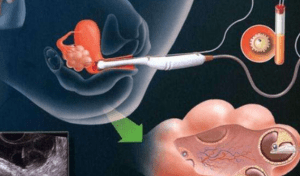In vitro embryo transfer is a critical step in assisted reproductive technology, marking an important transition from embryo culture to actual pregnancy. After many stages of preparation, physical examination, ovulation promotion, and egg retrieval, the transfer of embryos becomes a central part of the process that determines the success of IVF. During this process, it is crucial to ensure the suitability of the uterine environment and the health of the embryos. This post will delve into whether a hysteroscopy is required prior to IVF embryo transfer and what to look for when undergoing IVF in the United States.

Purpose of hysteroscopy before IVF embryo transfer
Hysteroscopy is a tool used to evaluate and treat the condition of the endometrium, and its use prior to IVF embryo transfer is particularly important.Through hysteroscopy, the doctor can directly observe the detailed condition of the uterine lining, including the presence of endometriosis, fibroids, uterine adhesions, etc.. These conditions may affect the success of the embryo's implantation, so it is critical to address these issues prior to transfer.
Hysteroscopy can help doctors pinpoint and manage lesions in the uterus. For example, in the case of endometriosis, hysteroscopy can be used to perform localized removal; in the case of fibroids, they can be removed through hysteroscopy, thus improving the environment of the uterine lining. In addition, hysteroscopy can be used to assess the thickness and quality of the endometrium, which also has a direct impact on the success of embryo implantation.
The study shows thatWomen who undergo hysteroscopy have a higher success rate after IVF embryo transfer than those who do not by approximately 20%. This suggests that hysteroscopy plays an important role in improving IVF success rates.
Pre-embryo in vitro
Prior to IVF embryo transfer, patients need to be aware of several aspects to ensure a successful and healthy transfer.
1、Diet before IVF implantation
Diet plays an important role in the preparation for IVF embryo transfer. Patients should chooseNutrient-rich, easily digestible foods such as fresh fruits, vegetables and whole grains.. Avoid spicy and irritating foods as well as overly processed foods, which may cause gastrointestinal discomfort and affect the overall state of the body. In addition, a moderate increase in protein-rich foods, such as chicken, fish and soy products, will help maintain the body's nutritional balance and create a favorable environment for embryo implantation.
2、Sleep before IVF implantation
A good night's sleep is one of the most important preparations for IVF embryo transfer. Studies have shown that lack of sleep may affect the hormone levels in the body, which in turn affects the success rate of embryo implantation. Patients are advised to get 78 hours of quality sleep per day and try to avoid late nights and overwork. A stable sleep pattern not only helps the body recover, but also provides a favorable environment for embryo transfer.
3. Exercise before IVF implantation
Moderate exercise helps to maintain the body in a healthy state. However, before embryo transfer, it is advisable to opt for low-intensity exercises such as walking and yoga to avoid the effects of over-exercise on the body. Vigorous exercise may cause fluctuations in hormone levels in the body, which may affect the implantation of the embryo. Maintaining a moderate level of physical activity will help improve overall health and prepare you well for IVF embryo transfer.
Precautions after IVF embryo transfer
Post-embryo transfer care is equally important and is directly related to the success of embryo implantation and future pregnancy.
1. No strenuous exercise
For 48 hours after embryo transfer, it is recommended to avoid strenuous exercise as much as possible.. At this stage the embryo is trying to settle and excessive exercise may interfere with the embryo's ability to settle. Light activities such as bed rest and slow walking are recommended to keep the body comfortable and relaxed. Physical condition at this time is critical for successful embryo implantation.
2. Prohibition of sexual intercourse
Sexual intercourse should be avoided in the initial period after the transfer, especially during the first three months. Sex may trigger violent contractions in the uterus, which may affect the implantation and development of the embryo. Maintaining the habit of avoiding sex will help protect the stable environment of the embryo and reduce the risk of miscarriage.
3、Body and mind, don't be anxious
Emotional stability is equally important to the success of IVF embryo transfer. Anxiety and stress may affect the hormone levels in the body, which may affect the implantation of the embryo. It is recommended to keep a positive mindset and avoid excessive worry. Appropriate relaxation activities such as meditation and deep breathing can help relieve stress and create an environment conducive to embryo implantation.
4. Strictly follow medical advice
Using medications and undergoing treatment exactly as directed by your doctor is key to ensuring a successful IVF embryo transfer. Medications such as progesterone and HCG help maintain a stable environment for the embryos. Regular checkups and following doctor's instructions can effectively improve the embryo's implantation rate and pregnancy success.
5, pay attention to high protein, more dietary fiber diet
Dietary modifications are also important after the transfer. Increasing the intake of high-protein foods and dietary fiber helps prevent constipation while providing the nutrients needed for embryo development. An intake of fresh fruits, vegetables, whole grains and high-quality protein foods can provide the body with adequate support for healthy embryo development.
Symptoms after IVF embryo implantation
Symptoms after embryo implantation vary from person to person, but some common symptoms can be used as a reference.
1. Abnormal body temperature: Changes in hormone levels in the body after the embryo has been deposited may lead to fluctuations in body temperature. Sudden increases or decreases in body temperature are usually associated with changes in HCG levels.
2. Vaginal bleeding: Slight vaginal bleeding is more common in the first 5-10 days after embryo transfer and is usually due to the rupture of small blood vessels caused by the embryo taking root in the endometrium. This type of bleeding is usually small and short-lived.
3. Abdominal distension: Slight swelling and pain in the lower abdomen is usually a normal reaction of the uterus adapting to the embryo after it has been placed in the womb. This symptom usually subsides gradually.
4. Breast swelling and pain: The increase in hormones in the body after the embryo has been deposited may lead to breast tenderness, which is one of the common symptoms of early pregnancy.
Reasons for the transfer of a single blastocyst in US triple IVF trials
The transfer of a single blastocyst is increasingly being used in in vitro fertilization (IVF) treatments, and this approach is particularly prominent in the United States for three-generation IVF (PGS/PGD). The following are the main reasons for single blastocyst transfer:
- Improvement of embryo implantation rate
The blastocyst is the stage where the embryo is cultured in vitro to day 5 or 6, when it is ready to implant in the uterine lining. Studies have shown that embryos at the blastocyst stage have a higher potential for implantation than early stage embryos. The transfer of a single blastocyst better mimics the natural process of conception, thus increasing the rate of successful implantation. According to the data, the success rate of blastocyst transfer is approximately 60%, while the success rate of early embryos is significantly lower.
- Reducing the risk of multiple pregnancies
传统的试管婴儿治疗中,为了提高成功率,常常会选择移植多个胚胎。然而,这样做会增加多胎妊娠的风险,可能导致并发症如早产和胎儿生长受限。通过单颗囊胚移植,可以有效减少多胎妊娠的发生,降低母婴健康风险。美国的数据显示,采用单颗囊胚移植的多胎妊娠率不到1%,相比之下,传统方法的多胎妊娠率则高达20%30%。
- Improvement of embryo quality control
Three-generation IVF technology (PGS/PGD) allows for comprehensive genetic screening of blastocysts prior to embryo transfer. This screening detects chromosomal abnormalities, genetic mutations, etc. so that the healthiest embryos can be selected for transfer. PGS/PGD technology allows for much greater accuracy in selecting healthy blastocysts compared to traditional methods. Studies have shown that blastocysts selected by genetic screening have a significantly higher live birth rate after implantation than non-screened embryos, reaching more than 70%.
Accuracy of IVF gender selection transplants in the United States
In the United States, gender selection transplants are accomplished through three-generation IVF technology (PGS/PGD), which has a very high accuracy rate. Below is a detailed description of the accuracy rate of gender selection transplants:
- Sex Chromosome Screening Technology
PGS (Pre-implantation Genetic Screening), a three-generation IVF technique, accurately analyzes an embryo's 23 pairs of chromosomes, including the sex chromosomes (X and Y chromosomes). By cellular sampling of blastocysts, PGS technology can accurately determine the sex of the embryo and screen for sex-related abnormalities. The accuracy of this method is close to 1001 TP3T, making sex selection highly reliable.
- Legal and ethical background
Sex selection is medically and ethically legal in the United States, provided the reason for the selection meets medical standards or the family plan. Due to the high accuracy of PGS technology, gender selection not only meets the needs of the family, but also avoids the risk of genetic disorders. For example, if a family has certain genetic disorders associated with gender, PGS technology can help select embryos free of genetic disorders.
- Clinical Data Support
According to the American Society for Fertility Medicine, the success rate of sex selection using PGS technology is 99%.The use of this technology not only improves the accuracy of selection, but also provides more options for families who wish to control the gender balance of their family. PGS offers a higher level of accuracy and reliability than traditional methods of embryo sex prediction.
Does the position in which the embryos are placed affect IVF success?
The placement of the embryo in the uterus has a significant impact on IVF success. The following is an in-depth analysis of this influence:
- Location and tolerance of the endometrium
Different parts of the endometrium have a significant impact on the success of embryo implantation. The ideal location for embryo implantation is the central portion of the endometrium, where the blood supply is adequate and the environment is favorable for embryo implantation and development. If the embryo is placed in the bottom or front wall of the uterus, these areas usually have a more adequate blood and nutrient supply, which helps to increase the rate of implantation. Studies have shown that the rate of embryo implantation is about 151 TP3T higher in these locations than in other parts of the uterus.
- Risk of embryos in the uterine horn or uterine opening position
Embryos that are deposited close to the uterine horns or the uterine opening can lead to a number of risks. A corner location may lead to a pregnancy in the uterine corner, a rare but serious condition that may result in uterine rupture or heavy bleeding. An embryo in the uterine orifice position, on the other hand, may trigger recurrent vaginal bleeding or even preterm miscarriage. The risks of these positions suggest that choosing the optimal embryo placement position is critical to improving IVF success.
- Graft timing and endothelial tolerance
The timing of the embryo transfer is also one of the key factors in determining the success of implantation. The endometrium is most supportive of embryo implantation during the "window of implantation", when the endometrium is at its most receptive. The state of the lining of the uterus is regulated by hormone levels, so hormonal modification to optimize the lining environment prior to implantation is an important measure to improve the success rate. Studies have shown that choosing to transfer embryos during the "implantation window" can increase the rate of implantation by approximately 30%.
summarize
The success rate of IVF embryo transfer is affected by several factors, including the quality of the embryo, the uterine environment, and the location of the transfer. In the U.S., the use of three-generation IVF technology has made single blastocyst transfers and gender selection possible, and these techniques not only increase the success rate of the transfer, but also reduce the risk of multiple pregnancies. Knowing and understanding these factors will help improve the success rate of IVF treatment and achieve a healthy pregnancy.






